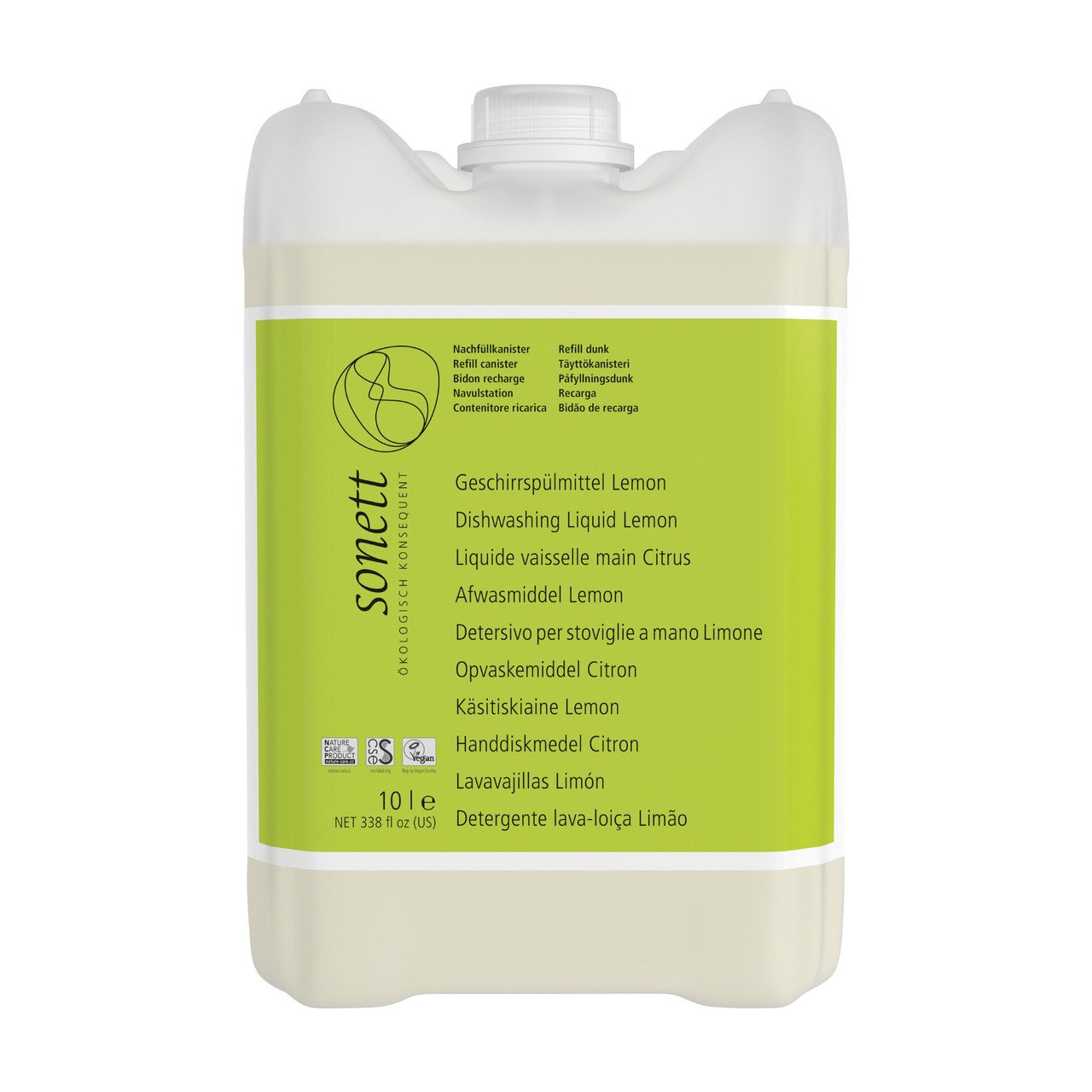Description of Dishwashing Liquid Lemon, 10 Litre
- Pure vegetable surfactants, especially gentle to the skin
- For manual cleaning of dishes
- Natural fresh fragrance of organic lemongrass oil
- 100% biodegradable
Origin and properties of the ingredients
Sugar, starch, and coconut oil serve as raw materials for the sugar surfactants used. Combined with coconut oil alcohol sulphate produced from coconut oil and sulphur oxides, they form a combination of substances which complement each other, increase their cleansing performance and possess excellent fat-dissolving properties as well as outstanding skin tolerance.
Product declaration
Sugar surfactants 5–15 %
Coconut oil alcohol sulphate 1–5 %
Vegetable alcohol (ethanol) 1–5 %
Common salt <1 %
Citrate <1 %
Natural essential lemongrass oil, certified organically grown <1 %
Balsamic additives, certified organically grown / collection from wild-growing plants <1 %
Water, swirled up to 100 %
List of ingredients as per EC 648 / 2004
Aqua, alkylpolyglucoside C10–C16 (lauryl glucoside), sodium C8–C14 fatty alcohol sulphate (sodium octyl sulfate, sodium lauryl sulfate), alcohol, sodium chloride, sodium citrate, parfum*, citral*
*certified organically grown
Technical data
Density: 20 °C approx.1.027 g / cm³
68 °F approx. 0.037 oz / in³
pH value: 20 °C, 5 g / litre H2O
68 °F, 0.18 oz / 34 fl oz US H2O approx. 7.5–8.5
Special product feature
The dishwashing liquid being highly concentrated, it is very economical in its use. The surfactants used, i.e. coconut oil alcohol sulphate and sugar surfactants, are 100 % biodegradable and very gentle to the skin as well, thanks to this combination.
Ranges of application
This is an extremely economical concentrated liquid for manual dishwashing, which even people with sensitive skin consider being exceptionally gentle to their skin.
Dosage
Add 2 dashes, approx. 3 ml / 5 litres (0.1 fl oz US / 1.3 gal) of water to the dishwashing water or apply straight onto the sponge.
At temperatures below 10 °C (50 °F), the product changes becoming slightly more solid and whitish; a phase which will pass, however, once the product is exposed to warmth and by shaking it lightly, if necessary.

